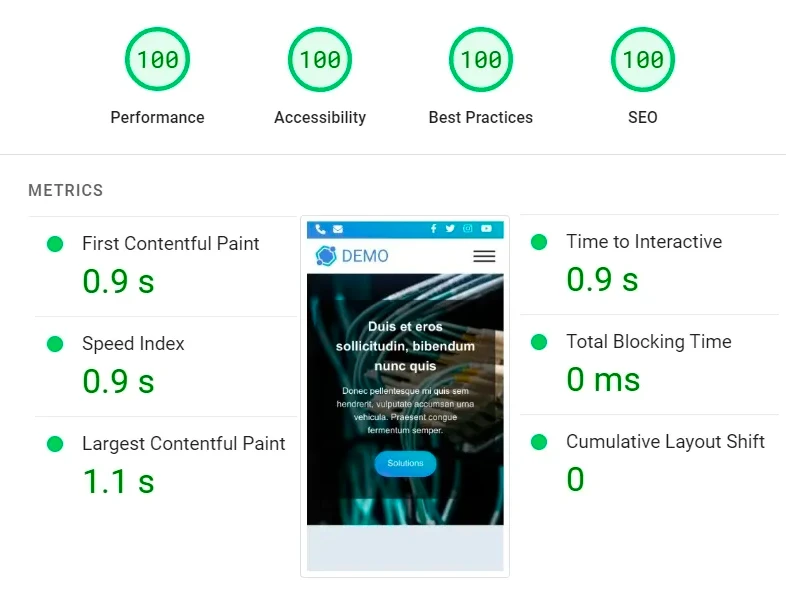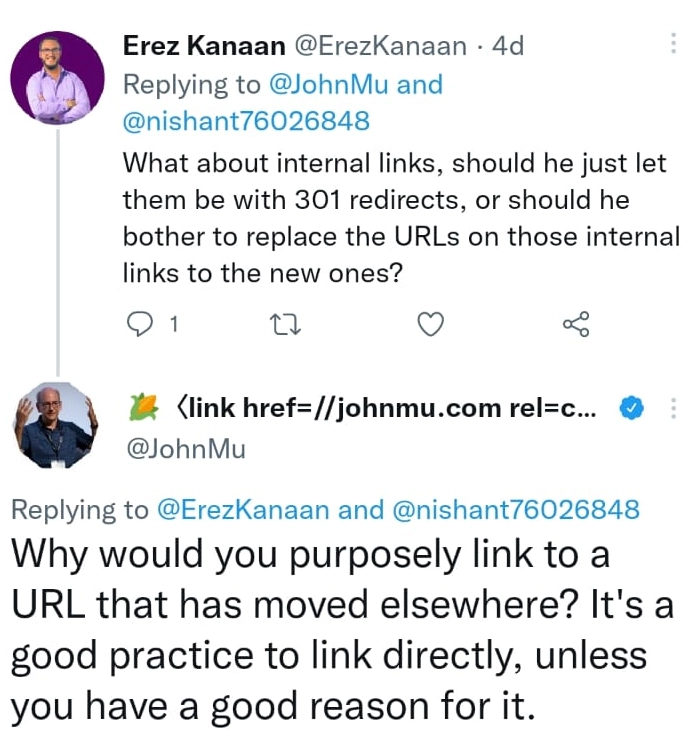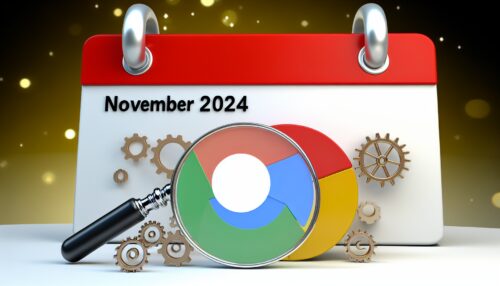Advanced & local SEO agency
✔ Google Quality Raters
✔ Local or national SEO
✔ Web Core Vitals
✔ X10 content & E-E-A-T
✔ AI & automation
Every SEO project starts with
6 different SEO audits
Standard audit
✔️ General technical site issues
✔️ Limited Search Console analysis
✔️ General backlinks profililing
Advanced audit
✔️ Page by page speed
✔️ Crawl budget waste
✔️ Custom crawl analysis
Reputation analysis
✔️ E-E-A-T analysis
✔️ Online reviews presence & recency
✔️ Brand recognition & sentiment
Local SEO audit
✔️ Website's hyper-local targeting
✔️ Listings accuracy & distribution
✔️ Duplicate listings detection
Content audit
✔️ Keyword cannibalism or staffing
✔️ Sitewide grammar & spell check
✔️ On & off-site duplicate checks
Backlink analysis
✔️ Toxic/bad links classification
✔️ Anchor cloud & context targeting
✔️ Follow/nofollow combination
We put it all together
In an extensive report with detailed tasks
Once its all fixed
We create a growth plan
Following Google's official Quality Raters↗
Tailored to your goals, and based on your SEO audits, & competitive analysis.
Whats Included in an SEO Plan
An effective SEO and content marketing campaign requires a multi-channel and multi-device approach. Our strategies encompass both traditional and non-traditional SEO practices and may cover a variety of areas:
✔ How-to's, listicles, and X10 content
✔ Content repurposing
✔ Syndication with social and media
✔ Affiliate marketing
✔ Email marketing
✔ Paid campaigns
✔ Improving UI & UX
✔ Collaborations for earned links
✔ Custom AI agents
✔ Image optimization
✔ Page speed optimization
✔ Server optimization
And so much more, all tailored to your niche.
Local SEO Strategy
Local SEO Strategy Our local SEO service aims to improve your visibility within your community by ensuring your business information…
is accurately distributed across various platforms. We also create hyper‑local content that targets your local audience and ensures that your NAP (Name, Address, Phone number) is consistent across platforms. Our team works with yours to identify the most effective keywords and topics that resonate with your local audience. We use a combination of targeted social media strategies, optimized local listings, and engaging local content creation to help you connect with potential customers in your area. We aim to establish your business as a local authority and drive more foot traffic to your door.
Technical SEO
Our Advanced Technical SEO strategy is designed to improve your website's performance and search engine visibility…
Initially, we focus on essential optimizations like fine-tuning metadata, content markup, and schema for better relevance. We refine vital aspects such as internal linking and sitemaps for improved indexing and navigation. Moving on to advanced tactics, we optimize images, implement caching, and leverage CDNs to enhance speed and responsiveness. While emphasizing Core Web Vitals, we aim to improve user experience metrics such as LCP, FID, and CLS. Our holistic approach ensures your website meets current SEO standards and stays ahead of future trends, driving better engagement and conversions.
Content calendar
We collaborate with your team to develop ideas for a semi-automated marketing calendar that includes interesting content…
specifically tailored to your goals and target audience. We create articles, listicles, how-tos, and detailed guides centered around the topics your potential buyers are searching for. This approach helps establish your brand as an authoritative voice in your industry.
Quality link-building
Our team is always looking for opportunities to get high-quality backlinks for your website from reputable blogs and magazines…
We do this by directly connecting with journalists and bloggers who write about your products and services. We leverage the authority you gain from your content calendar and distribution to ensure the best possible results.
Automation for scale
We provide AI integration services using tools like Openai API or ChatGPT and plugins such as CoSchedule or Make.com…
Our services can help you automate your content calendar and blog. Through our integration services, you can schedule custom social media shares on each post for every channel, allowing you to personalize your marketing on a large scale. We also assist large eCommerce brands by providing custom product descriptions and fixing onsite/on-page SEO issues at scale.
Team training
After we develop your marketing plan, we will build it on an online project board for the entire year…
We will then train your team members to implement their assigned tasks effectively. We will offer task descriptions, examples, video tutorials, and one-on-one support sessions to ensure that your team is well-equipped to execute their tasks successfully. Alternatively, we can handle the implementation process on your behalf.
More questions about SEO?
Do you cover local SEO too?
Yes, we specialize in local SEO strategies to ensure your business stands out in your community. Our services include precise listings distribution, hyper-local content targeting, social media engagement, and consistent NAP details across all platforms. We aim to boost your local online presence, attract more local customers, and establish your authority in the area. Whether you're looking to improve your local search rankings or enhance your visibility in local directories, we've got you covered.
Do you do SEO for eCommerce sites?
Yes, we specialize in SEO for eCommerce sites, with proven results in helping online stores increase their revenue from online sales by up to 1000%. Our comprehensive approach includes crafting high-end product descriptions, optimizing imagery, and designing beautiful product pages with an optimal user experience. We focus on minimizing the steps to checkout, enhancing internal linking, and increasing site speed. Additionally, we implement server-side tracking and more to improve your site's search engine rankings and create a seamless shopping experience for your customers. Our tailored strategies are designed to significantly enhance your online visibility and sales performance.
Do you do local SEO only in Scottsdale?
No, our local SEO services aren't limited to Scottsdale. We provide comprehensive local SEO solutions for businesses nationwide, leveraging targeted strategies that include distribution listings, hyper-local content creation, and consistent NAP details to improve your visibility and rankings in any local market. Our expertise enables us to adapt our strategies to meet the specific needs of your location, ensuring your business stands out, regardless of where you're based.
What's the deal with content & technical SEO?
Google ranks pages with exceptional experiences. So writers and designers create keyword-rich content with great UI/UX, while tech and web dev go from there to make sure Google likes everything you can't see, like loading fast, reducing bloat, optimizing server response time, and minifying code.
It's impossible to rank in a competitive landscape without both.
On-page, off-page, and site-wide SEO: what's the difference?
Sitewide SEO is optimizing the global elements of your website, such as structure, navigation, templates, sitemaps, redirects, and robots.txt.
On-page SEO involves optimizing individual pages on your site to make them more attractive to users and search engines. This includes optimizing content, titles, keywords, and meta tags and creating an easy-to-navigate page flow.
Off-page SEO optimizes a website's visibility beyond its pages and back end. This includes optimizing backlinks, social media marketing, Google Search Console, and other tactics involved with external elements.
What are Google Quality Rating Guidelines and E-E-A-T?
Google uses its Quality Rating Guidelines to assess the quality of websites and web pages. The guidelines help Google determine the importance of web page content and relevance to a particular search query, context, and searcher intent.
A website's experience, expertise, authority, and trustworthiness are rated with E-E-A-T in the Quality Raters Guidelines. Many things go into this rating, including domain authority, content quality, user engagement, and reputation. Businesses can improve their websites' quality with E-E-A-T, which means they'll rank higher in search engines.
A thorough understanding of the E-E-A-T guidelines can also help businesses improve their user experience and brand name recognition.
What's the difference between on-page and E-E-A-T?
Content and information on a website that proves the site's trustworthiness and authority are called on-page E-E-A-T (Expertise, Authority, and Trustworthiness). Things like the content quality, the author credentials, and the website's reputation go into this.
The global E-E-A-T refers to the external signals used by search engines to determine a site's trustworthiness, including backlinks, social signals, and overall brand recognition.
What is a crawl budget?
Googlebot's crawl budget is determined by the number and size of pages on a website, the rate of change, and the number of internal links on that page. It is essential in SEO because it determines how often Googlebot visits your website and how quickly it can index new content. Having a reasonable crawl budget ensures that your website is crawled regularly and that your essential content is indexed quickly.
What's indexability, and why do we need it?
Your website's indexability means search engine crawlers can read and index its content. Website structure, robots.txt data, canonical tags, and more contribute to this. Keeping a fresh sitemap in the Search Console, fixing broken links, and avoiding 301 redirects are essential, too.
But wait!
If your site isn't fast enough for SEO, fix it!
The MVP of ranking
With Google setting Core Web Vitals (CWV) as a significant ranking factor, SEO is now dependent on web dev more than ever before.
Many strong brands struggle with organic growth
Not realizing their sites were bloated from years of edits, bad plugins, and revolving staff.
Don't worry though
We got you covered
Your site speed performance is no longer an issue with our dedicated solution, which yields better SEO results with shorter project duration and lower costs. In a nutshell, we manually code an optimized clone of your theme that scores 90+ on CWV.

Learn more about Core Web Vitals ↗
Learn about our custom theme development →
Case study

Web Core Vitals: 40 to 100 Organic Growth: 600%⤴
How did we do this?
We kept WordPress as their CMS and cloned their commercial template to a custom theme. Before launching, the performance score on CWV was 40; after the launch, it jumped to a perfect 100, enabling their excellent content to get a real chance on page one.
Watch this 2-minute video to learn more.
A word from the client
"The quality of work and dependability are by far the best I have experienced."
Dan Gafni DMD, Founder, Dental Brothers

We also make custom SEO plugins
Broken links manager
Existing plugins can remedy broken links by automatically instating a 301 redirect. Yet, they tend to affect SEO since each redirect requires a nano byte from Google's crawl bot, which can significantly drain the crawl budget in large quantities. The ideal solution is to examine your site, locate the broken link, and manually replace it with the new address. Our plugin does just that.

- Manual or on a set schedule scans
- Partial or full automation
- Identifies all HTTP status codes
- Repairs both internal & external links
- Does not affect site speed
- Adheres to the latest SEO standards
- Complies with CMS specifications
Why choose our SEO company?
SEO experience
Unlike other SEO agencies with high employee turnover rates, our CEO fully engages in every project.
Best practices
We stay up to date with the latest search engine optimization news so we can provide you with dependable solutions.
Innovation
We take on challenges others won't. Using manual expertise and AI technology, we deliver exceptional SEO results & ranking.
And we provide peace of mind
We sign an NDA and Non-Compete before you provide our SEO agency access to anything.
Based in Scottsdale, Arizona
Kanaan & Co. does not only provide SEO for local businesses in Scottsdale, but is also an essential part of the Scottsdale community. We firmly believe in understanding the local landscape to provide customized SEO services to fulfill our clients' requirements. Our goal is to create long-term relationships with our clients and support local businesses in Scottsdale and anywhere else, by employing our expertise to contribute to the growth and success of our community.
Address: 7702 E Doubletree Ranch Rd, Scottsdale, AZ 85258.
Phone number: (602) 551-6866
Digital agencies and companies
Trust us everywhere


















"Kanaan & Co. is a strategic partner of our agency, and the team is a breeze to work with. We feel like they're in-house."

Jeremy Ginsburg - Founder & CEO, NoticeUMarketing
A digital agency from Las Vegas
Read the latest SEO news
Ready to Elevate Your SEO Game?
Transform your online presence and skyrocket to the top of search engine rankings with the help of Kanaan & Co. Our team of experts is dedicated to understanding your unique business needs, innovating solutions, and delivering powerful results within days.


